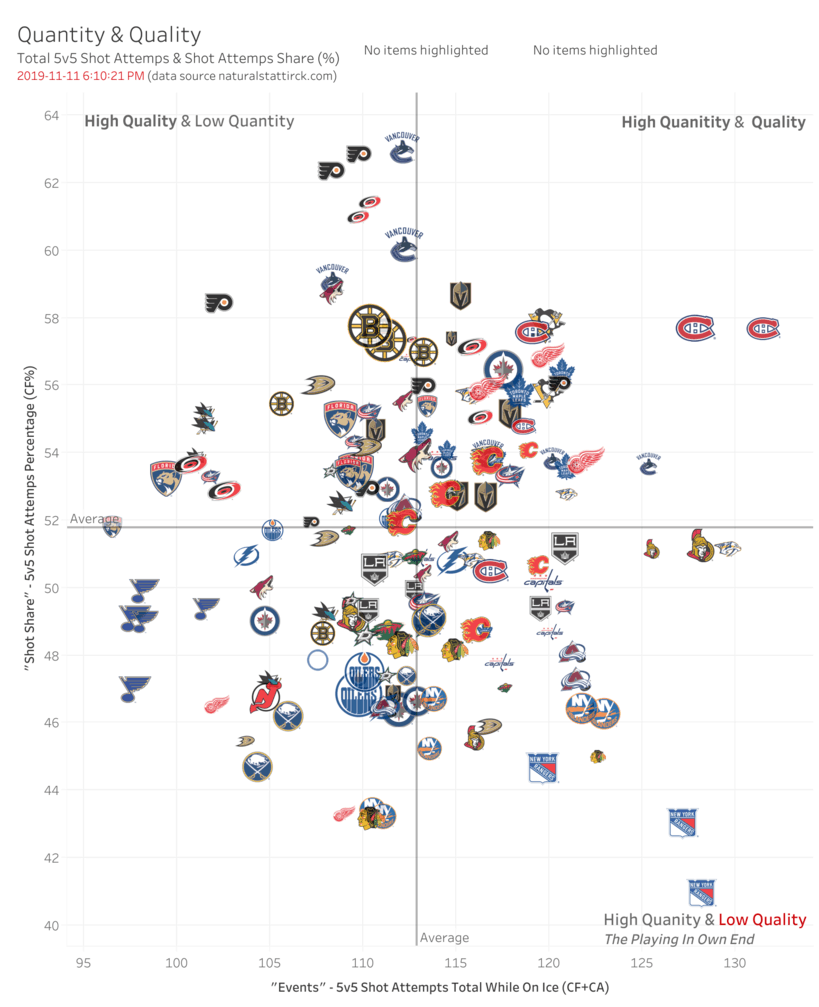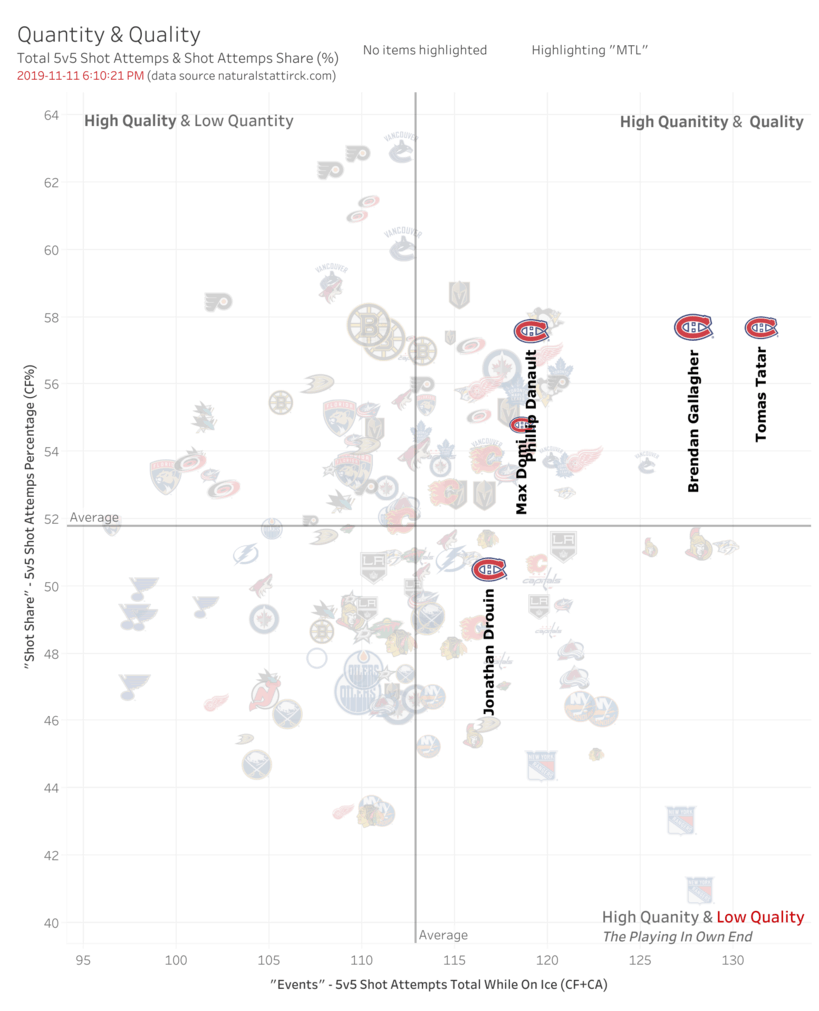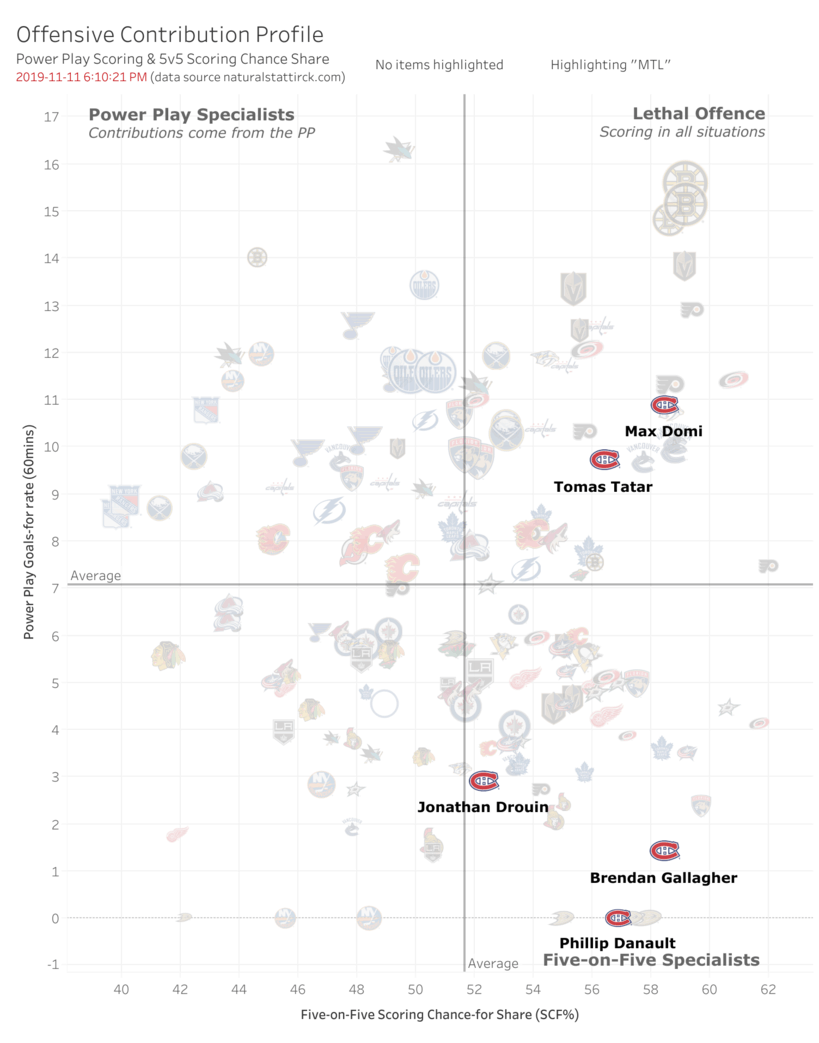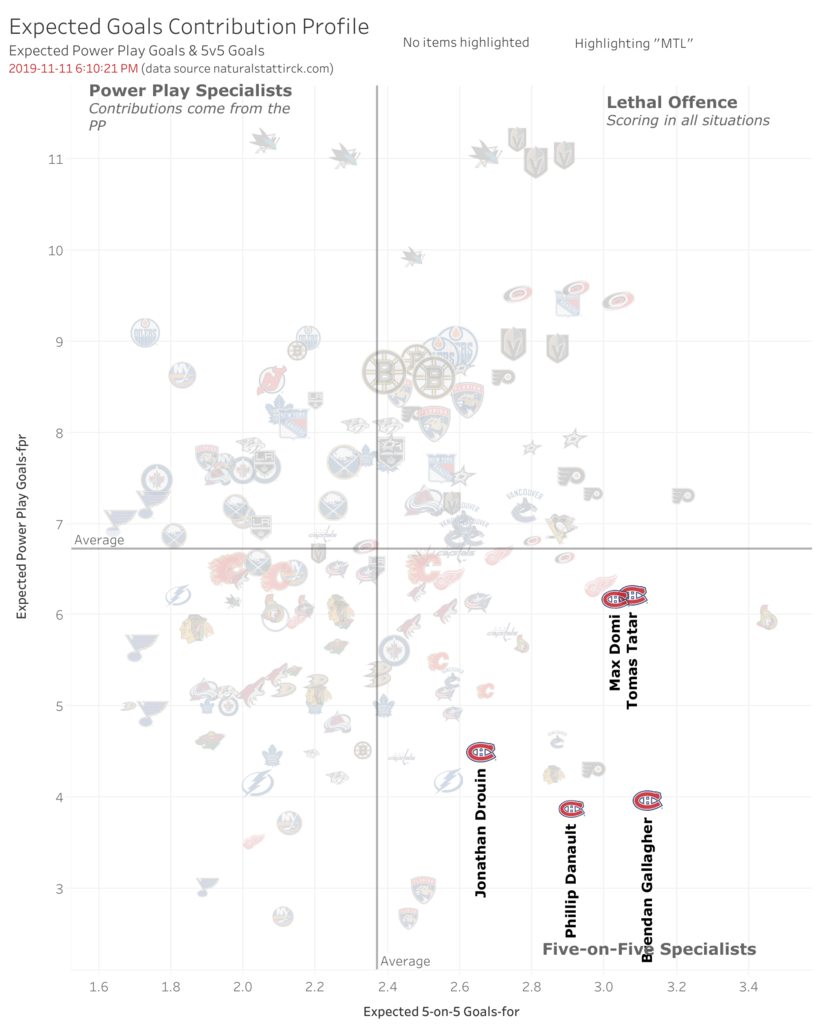Any good research venture sets out to answer a question. Like, which country’s population has the highest disposable income per capita? Or, which schools in my city produce the most successful students?
For me, I want to know how good the Montreal Canadiens’ Phillip Danault line is. That’s right. How good is the Danault, Brendan Gallagher and Tomas Tatar line?
If this a burning question for you, then it’s your lucky day. We are going to tease this answer out with a little digging and a lot of contemplation.
The Definition Of Good
First, we need to define what is good. I read a lot from some of my favourite sports writers including Marc Dumont and Sean Gordon, and heard the praise for the Canadiens’ first line on radio and television. They say it’s about the ability to generate five-on-five offence; the difficult matchups; zones starts and timely plays.
It’s hard to deny the claim that the Danault line is one of the best in the NHL, based on the numbers flashed on the T.V. screen and flaunted on Twitter. So before we take a closer look at the numbers, let’s define good.
To me, good is scoring more goals than your opponent. Players normally score goals during even strength or on the power play. If a player is only contributing during one or the other format of play, that player is likely not maximizing offensive contribution.
You know where this is going already, right?
But wait. Most hockey analysts will give more weight to five-on-five play because that’s where most of the game is played, and it seems to be a much more important factor when it matters; in the playoffs. So, we will definitely consider favouring five-on-five play over power play contribution in our assessment.
But that’s not it. There are many other nuances to consider such as zone starts, goalie save percentage and teammates. Good thing there are advanced statistics to help with these considerations. So let’s dive in.
Five-On-Five: Playing The Right Way
The first area of our research starts with the key to playing quality hockey; a player’s ability to play well during five-on-five play. The hockey cliche “play the right way” refers to this part of the game; where most of the game is played and is considered the most important determinant of winning.
Playing with possession. Controlling the play. These are references to possession; the more of it you have, the greater the chance your team will score. It doesn’t work out this way every shift or even every game, but in the long haul, research shows that possession correlates with scoring and winning. Possession is commonly measured by shot attempts, or Corsi, which is defined as a shot towards the net including shots that missed the net, hit the post, were blocked or saved. The more shot attempts generated, the better chance your team has of winning. So coaches build systems to help players achieve this outcome.
Below is a graphic that plots all NHL forwards on a quadrant chart. On the X-axis (bottom) is total five-on-five shot attempts per 60/mins while the player is on the ice. The further to the right, the more shots attempts per 60 mins. The Y-axis (left) plots shot attempts share, or percentage, which tells us the team that is getting the greater percentage of the shot attempts.

I conveniently labelled the quadrants for easy reference. The best players are in the top right quadrant. There is a lot of action (shot attempts) while these players are on the ice, but they also have the greater share, or percentage, of those shot attempts.
Pardon the cluttered visual of this quadrant chart, however, it is a necessary evil to provide context. In the case of the Canadiens’ first line, the chart does a masterful job of illustrating context; that the trio of Danault, Gallagher and Tatar are separated from the pack of their forward peers and firmly planted in the best performing quadrant.
Danault Line Dominating Five-On-Play
Seen more clearly in this version of the graphic below, Danault is beside Sidney Crosby and his line-mates, Gallagher and Tatar, are way over on the top right corner illustrating that they generate a ton of shot attempts, but also have a very high percentage of the share of those shot attempts.

There are several players higher in the shot attempts share percentage including a strong contingency from the Philadelphia Flyers, Carolina Hurricanes and the Vancouver Canucks, but they are below average (for this sample group) in generating the volume of the Danault line. So you might say those players are more conservative than the players on the Danualt line. Regardless, it’s difficult to deny that the Danault line is one of the best lines in the NHL based on five-on-five possession. In this sense, they are a model example of how to play the right way.
But there is more to investigate.
The Power Of The Power Play
There’s no denying that a good power play can help win games, and is a vital component of offensive contribution. Most Canadiens fans still have painful memories of last season’s futile power play which undoubtedly cost them a chance to join the fight for the Stanley Cup. We can all agree that power play success is a key performance indicator for overall offensive contribution.
With this measurement in mind, I designed another quadrant chart to expose a player’s contribution profile. It reveals if a player is a power-play specialist, five-on-five specialist or strong in both categories.
The Y-axis, power-play goals-for per 60 mins, is simply the player’s ability to score power-play goals. Whereas, the X-axis plots a player’s ability to generate five-on-five scoring chances (scoring chance share). Again, I labeled the quadrants for ease of reference. The top right quadrant is the best; these players are skillful on the power play and five-on-five. Whereas the bottom right corner plots players who are excellent at five-on-five, but have not contributed at a high level on the power play.

This chart clearly illustrates that only one player from the Danault line contributes at a high level on the power play (Tatar), whereas several teams have players that are contributing at an elite level, both on the power play and five-on-five. I took the liberty to highlight two of these lines on the graphic below.
To me, this pretty much disqualifies the Danault line from being considered one of the best lines in the league. Power play contribution is too vital of an aspect in the game to be removed from measuring the performance of a player or a line.
Expected Goals Reveals Top Lines
Lastly, I provide one more exhibit at an attempt to measure a player’s offensive contribution. This quadrant plots the expected power-play goals share (Y-axis) and five-on-five goals share (X-axis). The expected goals (xG %) is an advanced statistic that attempts to measure the likelihood of a goal being scored based on a multitude of factors including where the shot is taken, the type of shot, where the pass is coming from and at what speed.

In this graphic, for easier reading, I selected only 10 teams. This shows that the Canadiens top line of Danault, Gallagher and Tatar are in very good company, but also that there are several players ahead of them in both power play and five-on-five expected offensive contribution, or expected goals share.
Some pretty impressive lines from the Vegas Golden Knights, Philadelphia Flyers, Carolina Hurricanes, Vancouver Canucks and of course the Boston Bruins.
Conclusion
The Danault line is extremely good at five-on-five. But it is clear that Danault is used as a defensive specialist. His absence from the power play may disqualify his line from being measured against some of the NHL’s top lines, however, it also puts him in a more advantageous position to be one of the best shutdown players in the league. Danault’s zone starts are far less advantageous than all the players in these charts; starting less than 40% of his starts in the offensive zone. It makes his five-on-five contributions even more spectacular.
I would call the Danault line one of the best five-on-five lines in the NHL. Maybe the best. But, to be measured against the best lines in the NHL, Danault has to contribute on the power play; a least at an average level.
I’ll keep an eye on this all season and report back if anything changes.